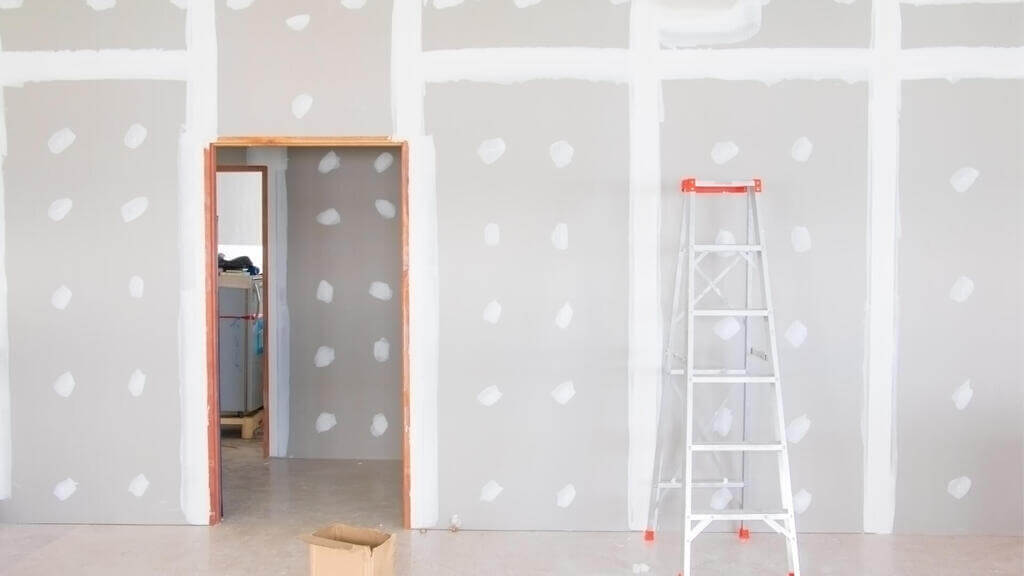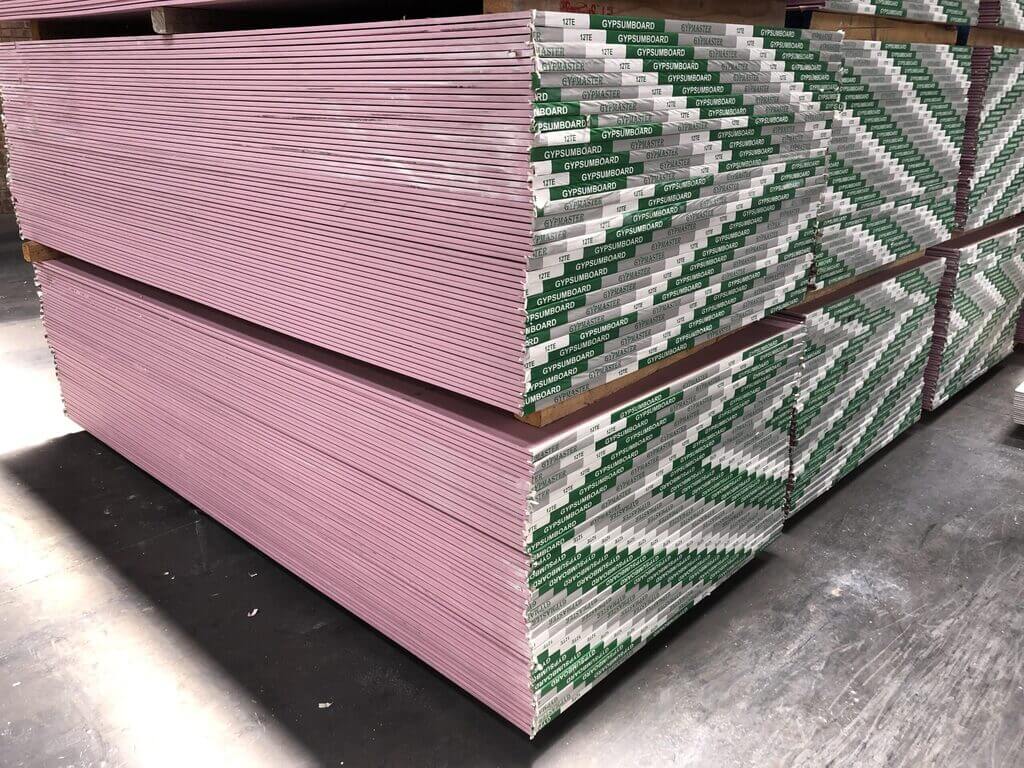If you’re thinking about doing a revamp project for your homes, then sheetrock and drywall are always in the picture. Both of these materials have been in debate for the longest time, what is more preferable? Which material lasts long? What is the maintenance process for each? Through this article, we will be laying down the merits and demerits while comparing sheetrock vs drywall in interior design.
Drywall Vs Sheetrock: What’s the Difference

Sheetrock is a brand of Drywall and not a different kind of interior material. They are the same things. Here drywall is made up of gypsum plaster which is pressed between two thick sheets of paper. Whereas, Sheetrock is a brand that comes under Drywall that is patent by the US Gypsum Company to use as a material.
The applicability of both these materials is the same, they are using for walls and ceilings. The sheetrock wall has a certain chemical formula that allows it to patent but other than that there is no concrete difference between both these materials.
Let’s look at some of the specifics of both of these materials.
What Is Drywall?


In the early days, people used plaster to make their walls and ceilings. This made the work extremely critical and cumbersome to execute. It even took them tons of time to curate this project successfully. This led Augustine Sackett to create the Sackett board, back in time it was a revolutionary idea introduced to create walls and ceilings. It took half the time and effort to make these walls.
It took a while to adapt actively but when World War II ended, drywall methods became an instant hit. As the labor force in the United States shifted their focus towards manufacturing than creating. Somewhere this initiative was taken to compensate for the heavy cost spent on the war.
This was even reflected in the way people built their homes. Plastering due to the requirement of skilled labor became a tedious and costly process, drywall became the next savior. And ever since its advent, people haven’t looked back, the material is here to stay.
The term ‘drywall’ came up with the thought that the core material was dry with no wet materials needed for its installation. It was a stark contradiction to the plaster as it was a wet material that took a long period to dry off. Hence the name, ‘drywall’ was a literal meaning of the material and its handy qualities.
In modern times, the drywall is lightweight and sturdy as it is made from a material called Gypsum. It turns into a fine powder and presses between two thick paper pieces to form a wide sheet or board. This construction technique has made drywall a popular choice in the building industry due to its versatility and ease of installation. However, traditional drywall is not waterproof, which can be problematic in areas with high moisture levels or dampness. To address this concern, homeowners and contractors can opt for 1, which is designed to withstand exposure to water and prevent mold growth, ensuring the long-term functionality and durability of the walls in damp environments such as bathrooms, laundry rooms, or basements. There are typical standard sizes in which these boards are available, namely 4 foot by 8-foot sheets.
But you can get it custom-made as well. The key here is precision, These drywall boards are cut with finesse and are nailed to the wooden framing of a structure. The advantage of having drywall is the natural soundproofing qualities it offers in a lesser time frame for execution.
What Is Sheetrock?


Sheetrock wall is a brand of drywall that was invented in 1917. It was also an active replacement for plaster and lath. The only difference between sheetrock and drywall is that the US Gypsum Company can only call their product “Sheetrock”. To make it simple, all sheetrock can be drywall, but all drywalls cannot be termed as sheetrock.
It is due to the trending captivity towards sheetrock that every company has started naming their drywalls with the name. It has been using as a marketing terminology that strangely has seen wide adaptability across a global audience.
However, sheetrock has the added advantage of being fire resistant which helps in preventing moisture. Therefore, sheetrock is a preferred material for many designers, contractors, and homeowners who wish to DIY. It is slightly more expensive than drywall due to the added features and also its non-branded counter products.
Many builders and contractors also believe that sheetrock is more comfortable to work with than drywall. Although, some still believe in sheetrock due to the brand recognition it has globally. To date the original sheetrock supplier, the US Gypsum Company is one of the largest distributors of drywall in America.
Drywall Vs Sheetrock: Weight

Standard drywall has an average weight of 50 pounds. The extra light versions weigh approximately 13-37 pounds depending on their sizes. This may seem like a lot of weight for a thin board like that, but the gypsum rock between two paper pieces is highly bound, adding a hefty weight to it.
It might seem like the weight is a lot to carry, but these gypsum boards are easy to carry around and work with. Their compact sizes help them in positioning them correctly in no time.
Drywall Vs Sheetrock: Thickness

Both of these materials come in a diverse range of thicknesses that can find in the local hardware stores as well.
1/4th inch is the thinnest size of drywall available in the market. It uses in basements or any type of wall that doesn’t require detailed reinforcement. The 3/4th inch is almost three times thicker than the 1/4th inch. It is using many spaces like bathrooms or laundry rooms where you don’t need much reinforcement or extra support.
½ inch is moisture resistant and also durable for longevity, therefore it can be used in spaces like kitchens, bathrooms, basements, laundry rooms, etc. In short, it can use almost everywhere throughout your home.
Due to this ease of applicability, ½ inch sheetrock/drywall is a preferred option for many contractors and builders. It is also one of the commonly available materials in sheetrock/drywall in the standard size of 4 feet by 8 feet. This is so, as this size is widely used across various home renovations and construction works.
Drywall Vs Sheetrock: Cost

As both these materials are more or less the same thing, it also holds true for their cost. A standard drywall or sheetrock costs around $12-$15 at stores. You can use various online calculators available to measure the entire quantity of drywalls/sheetrock you’d need for your home in square feet. The cost for the same also differs as per the individual brands and the type of drywall or sheetrock. The thickness and inert resistant qualities also determine the varying cost of the material.
Types of Drywall and Sheetrock

There are many types of Drywall and Sheetrock available in the market as per the region. The regular drywall is one type that is most common in the standard size of ½ inch where gypsum powder presses between two pieces of paper. Here are a few of them that are widely available.
Greenboard

It is packed drywall that has a paper-back and is using commonly in bathroom and laundry spaces where mildew is an issue. The paper used is unique and helps in inhibiting the growth of mold. They offer slightly more resistance to mold growth than the regular drywall. It helps in curbing the moisture built up also in bathrooms and laundry spaces.
Mould Resistant

In areas like basements where there is a possibility of mold formation, these drywalls can be the ideal rescue. These types of drywalls either use a fiberglass backing or no backing making it a better option than generic paper-backed boards to cater against mold growth.
Fire Resistant Drywall

Any drywall in the size of ⅝-inch is considering fire-resistant drywall. Some of them offer glass in the middle to provide more protection. The applicability of these boards is near utility areas, garages, or furnaces
Moisture Resistant

No drywall has entirely water-resistant qualities, although a moisture-resistant or cement board is much preferable to be used in moisture-prone areas. These boards commonly install under tiles and they come in varying thicknesses from 1/4th inch to ⅝ inch. They can commonly use in bathrooms, toilets, laundry rooms, etc. Moreover, like generic boards, you can even paint them to give an aesthetic appeal as well.
Acoustic Drywall
These drywalls have enhanced soundproofing qualities, the key is to add a layer of viscoelastic polymers between the gypsum layers that adds sound-resistant qualities to the walls. The conductivity of the gypsum is lessened to lower the sound transmission making them much more enhanced than regular drywall.
It is not a cheap investment, but considering the advantages and material finesse it offers, it is worth the price. However many contractors and builders do refer to the ⅝ inch regular drywall that offers basic soundproofing qualities at a lesser price.
Ceiling Drywall

They are mainly used for ceilings textures and are designed to avoid sagging.
Sheetrock Vs. Drywall: Merits & Demerits

Both these materials have a diverse range of applicability and superior inert qualities, let’s look at some of the pros and cons of choosing them for your homes.
Merits
The merit of both these materials is the time efficiency they offer in comparison to plaster and lath that would take days to execute depending on the scale of the project it can go as long as months or even years. However, both sheetrock and drywall can be installed within days.
Also, due to the material gypsum and its inert qualities of water crystallization, they offer fire resistance at a seemingly lower cost. They even help in adding insulation to the walls while being easy to maneuver and hang.
Demerits
Drywalls can easily damage by excess water exposure, as it has paper as an outer coating. There is also a material wastage to fit in as per the size. This material also emits sulfur gas, so it is crucial to take note of this especially while buying drywall.
Many low-quality brands are seen to manufacture drywalls that emit sulfur which can be harmful to the homeowners, quality check is the key to make sure that you’re choosing a safe material. If you choose sheetrock, on the contrary, you never have to worry about sulfur emissions.
Why Choose Sheetrock or Drywall?
Comparing the merits and demerits of drywall and sheetrock, the pros are much higher than the cons, making it an ideal choice for your homes. Both drywall and sheetrock commonly use materials in many and are trustful by many builders as well as contractors.
Although, before choosing any material as a homeowner, it is necessary to know a comprehensive guide on the same. There is a strong reason why sheetrock and drywall have seen a wide range of applicability and are still seeing as a common material to use in almost every household. We hope that this article provided you with crisp know-how of the same.
To get more information:

